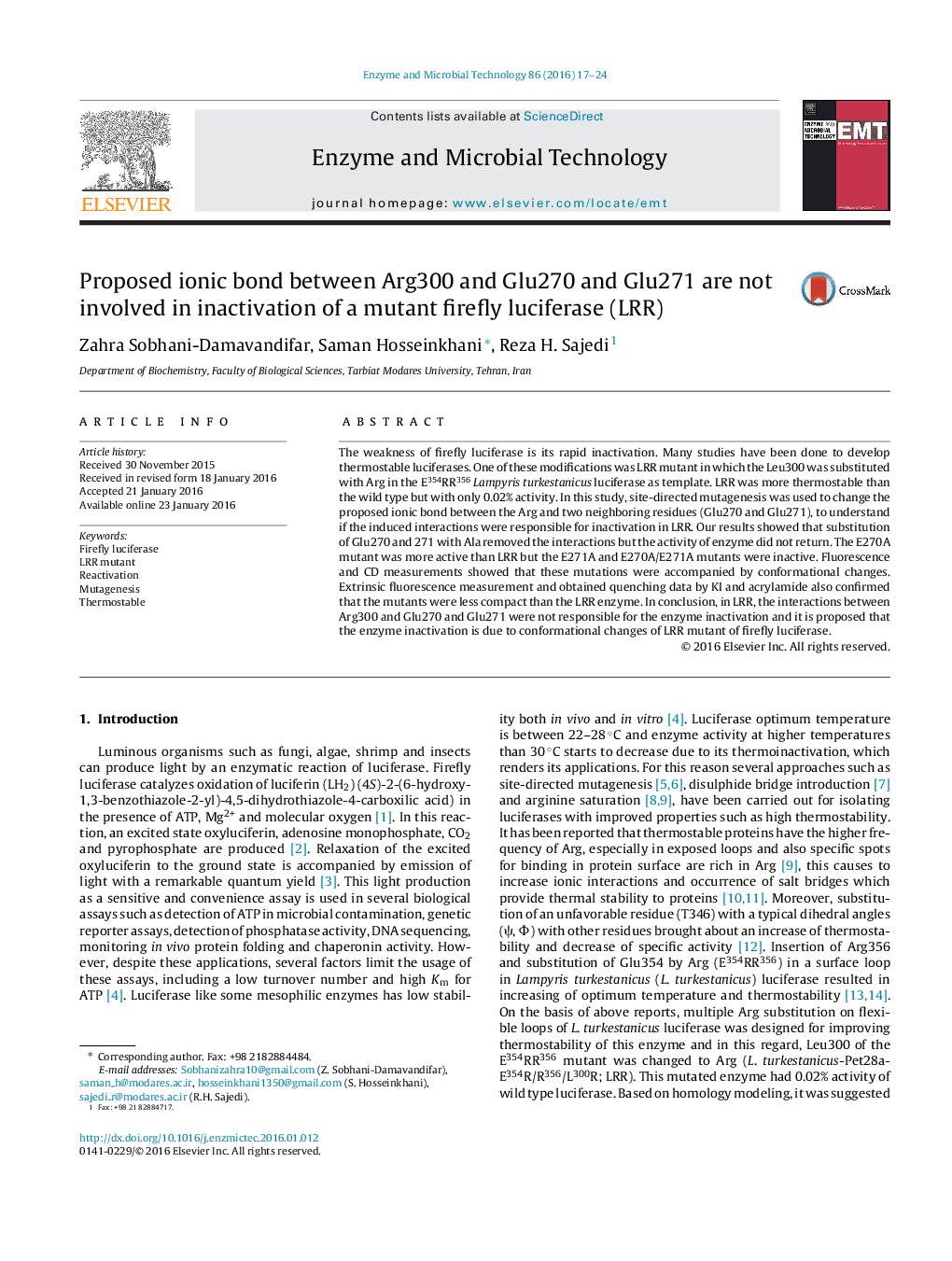| Article ID | Journal | Published Year | Pages | File Type |
|---|---|---|---|---|
| 16793 | Enzyme and Microbial Technology | 2016 | 8 Pages |
•LRR is more thermostable than the wild-type luciferase.•LRR has only 0.02% of native activity.•Disruption of LRR ionic bond did not return activity.•Disruption of LRR ionic bond reduced rigidity of luciferase.
The weakness of firefly luciferase is its rapid inactivation. Many studies have been done to develop thermostable luciferases. One of these modifications was LRR mutant in which the Leu300 was substituted with Arg in the E354RR356Lampyris turkestanicus luciferase as template. LRR was more thermostable than the wild type but with only 0.02% activity. In this study, site-directed mutagenesis was used to change the proposed ionic bond between the Arg and two neighboring residues (Glu270 and Glu271), to understand if the induced interactions were responsible for inactivation in LRR. Our results showed that substitution of Glu270 and 271 with Ala removed the interactions but the activity of enzyme did not return. The E270A mutant was more active than LRR but the E271A and E270A/E271A mutants were inactive. Fluorescence and CD measurements showed that these mutations were accompanied by conformational changes. Extrinsic fluorescence measurement and obtained quenching data by KI and acrylamide also confirmed that the mutants were less compact than the LRR enzyme. In conclusion, in LRR, the interactions between Arg300 and Glu270 and Glu271 were not responsible for the enzyme inactivation and it is proposed that the enzyme inactivation is due to conformational changes of LRR mutant of firefly luciferase.
